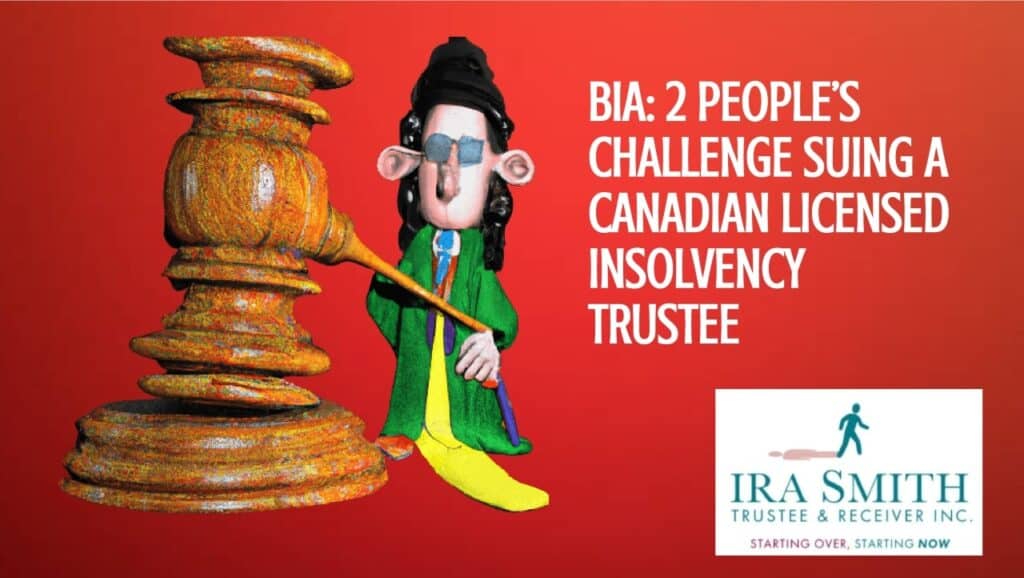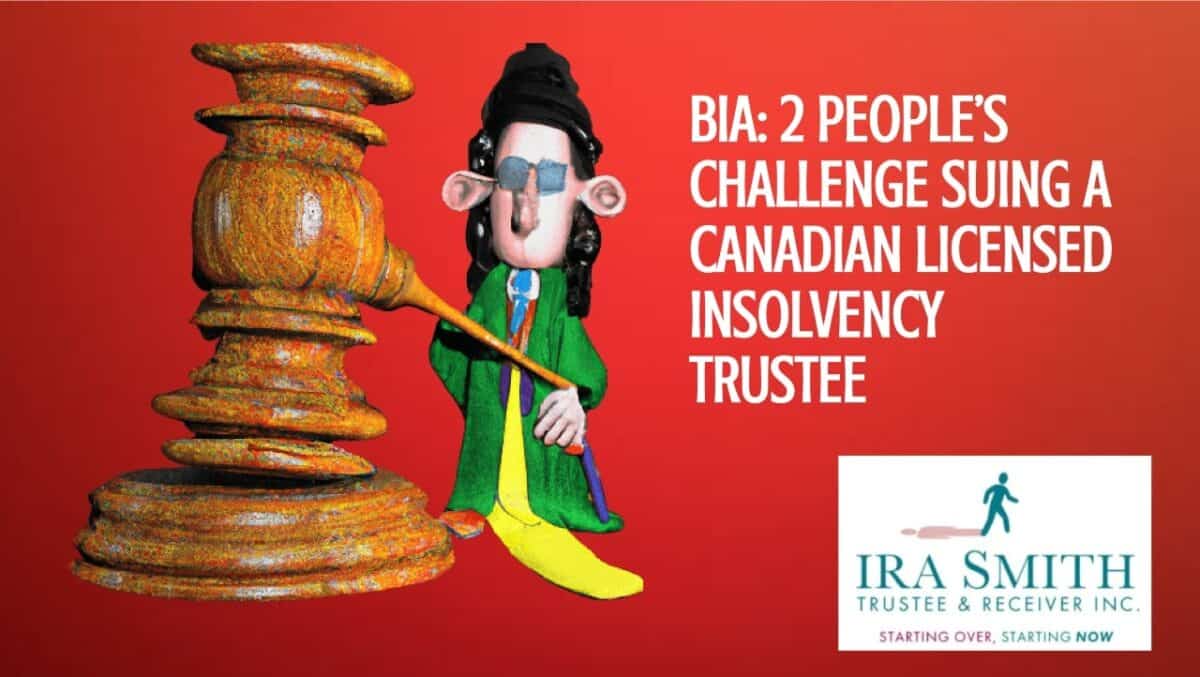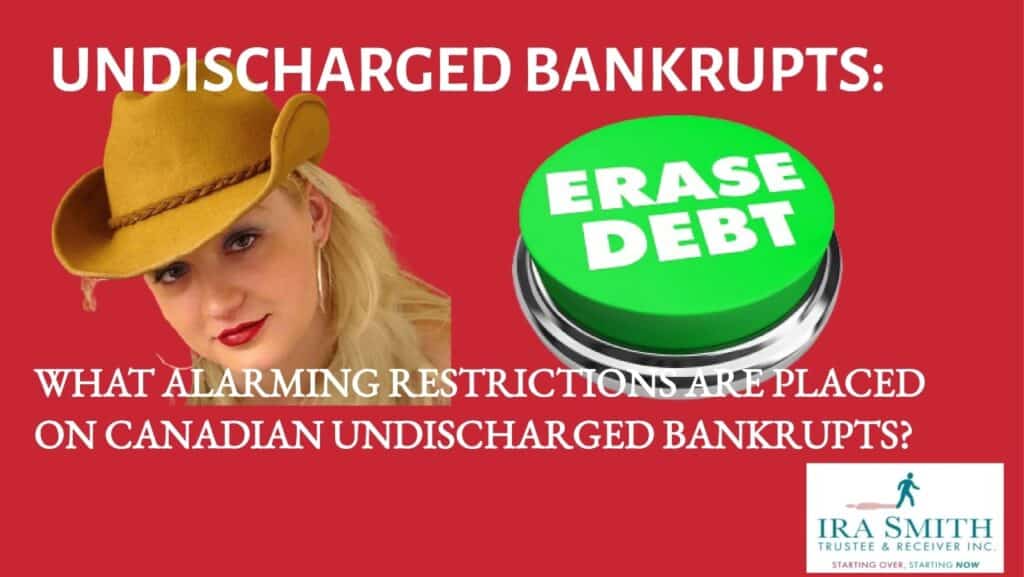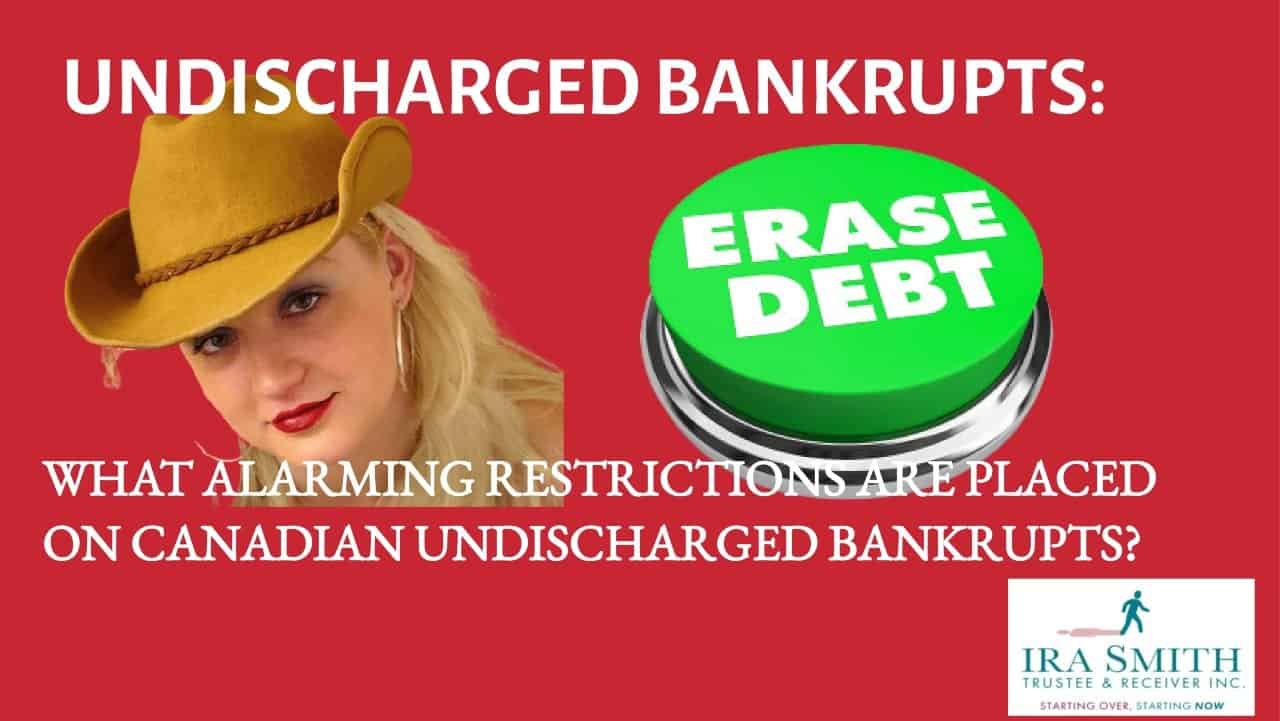<h2>
Bankruptcy and Insolvency Act (R.S.C., 1985, c. B-3) (BIA): Introduction
On April 13, 2023, the Supreme Court of Canada (SCC) dismissed the application by the legal counsel of a former bankrupt and his wife for leave to appeal the costs awarded against them in a decision of the Court of Appeal for Ontario. As is the usual case, the SCC did not give any reasons for the dismissal. The Court of Appeal for Ontario’s decision dealt with what is required under section 215 of the Bankruptcy and Insolvency Act (Canada) (BIA) to sue a licensed insolvency trustee.
In this Brandon’s Blog, I provide a comprehensive guide to the Court of Appeal for Ontario decision and everything you need to know about section 215 of the BIA. Using this real court decision as an example, we’ll explore the ins and outs of Section 215 of the BIA to give you a clear understanding of its purpose, how it applies, and the potential consequences of non-compliance.
Overview of BIA Section 215
Section 215 of the BIA requires that permission of the court be obtained to bring an action against the Office of the Superintendent of Bankruptcy Canada, an official receiver, an interim receiver or a licensed insolvency trustee with respect to any report made under, or any action taken, under the BIA.
The purpose of this section is to ensure that the court must first decide if a proposed action has on its surface a legitimate purpose relating to the administration of insolvency matters in Canada and to avoid frivolous actions that have no chance of success.
Regular readers of Brandon’s Blog know that I have been following and writing about the case of the former bankrupt, Mr. Wayne Flight and his wife, Amber Nicole Flight. In my November 2021 blog titled: TRUSTEE IN BANKRUPTCY: CERTAIN ACTIONS AGAINST TRUSTEE CAN BE UNLEASHED WITHOUT FIRST REQUIRING COURT PERMISSION, I detailed a decision of the Ontario court where the motion judge decided that notwithstanding section 215 of the BIA, the Flights did not need to first obtain authorization from the Court in order to initiate their legal proceeding.
Then in July 2022, I wrote that the licensed insolvency trustee (formerly called a bankruptcy trustee) had appealed this lower court decision and gave an overview of the appeal and other related issues in my blog titled: INSOLVENCY TRUSTEE: TURNS OUT CERTAIN ACTIONS AGAINST THE TRUSTEE CANNOT BE UNLEASHED WITHOUT COURT PERMISSION.
As stated above, this Brandon’s Blog will provide a comprehensive guide to the Court of Appeal for Ontario decision and everything you need to know about section 215 of the BIA.
BIA: The Motion Judge’s Decision
The motion judge decided that the Flights did not require the permission of the court, under s. 215 of the BIA, to bring an action against the Trustee, relating to the administration of four bankruptcies of Brian Wayne Flight! The same corporate trustee was the Trustee in each of his bankruptcy proceedings. The lower court judge rendered a decision that negates the applicability of the clause in dispute, deeming the action to be levied against the individual Trustee in a personal capacity, and further alleging omissions as a mitigating factor. She did not assess whether section 215 of the BIA did apply and if it did, should permission to proceed with the action be granted.
Upon due consideration of the arguments presented, the Court of Appeal for Ontario has granted the Trustee in Bankruptcy leave to appeal and has subsequently set aside the order of the motion judge. In rendering its decision, the appellate court has determined that pursuant to section 215 of the BIA, permission to bring the civil action must be obtained and has thus directed the matter back to the bankruptcy court to assess whether such permission should be granted.
It is noteworthy that, despite the Flights’ appeal of this ruling to the SCC, said appeal has been dismissed. Consequently, the matter will now be remanded to the bankruptcy court for further deliberations.
The BIA case background
Mr. Flight filed for bankruptcy on four separate occasions – specifically in the years 2004, 2006, 2011, and 2016. The same corporate trustee was the Trustee in respect of each of these bankruptcies. The same individual licensed insolvency trustee was the individual at the corporate trustee with carriage of Mr. Flight’s bankruptcies.
The total of the proven claims in the first three bankruptcies was $324,800. The total amount distributed to creditors of those bankruptcies was about $3,200. Proven claims in the fourth bankruptcy were $127,870.
In the year 2018, amidst his fourth bankruptcy, Mr. Flight uncovered the fact that substantial amounts had been unlawfully appropriated from his business operations between 2003 and 2018. The perpetrator of this offence was none other than Julie LeBlanc, his former spouse, his bookkeeper, and authorized agent. Ultimately, Mr. Flight determined that the amount of the misappropriations was approximately $206,000.
Mr. Flight successfully retrieved a sum of approximately $30,300 from Ms. LeBlanc, however, it was not submitted to the Trustee. Subsequently, in April 2018, Mr. Flight lodged a complaint with the Office of the Superintendent of Bankruptcy regarding the Trustee’s inability to identify Ms. LeBlanc’s actions. Following the formal complaint, the Trustee was made aware of Ms. LeBlanc’s illicit activities and the funds secured by Mr. Flight.
Disputes then arose between the Trustee and Mr.Flight concerning whether and on what terms he would be discharged from bankruptcy and how the payments from Ms. LeBlanc should be treated. In August 2019, Mr. Flight was granted a conditional discharge on terms that, if complied with, allowed him to receive an absolute discharge after twelve months. The Trustee and Mr. Flight did not agree as to whether those conditions were met.
In September 2019, Mr. Flight and his current spouse, Amber Nicole Flight, commenced an action against the individual licensed trustee, seeking relief (the “Action”). The Action does not name, or refer to, the corporate trustee, but it treats the individual trustee as though he were the Trustee. The central allegation in the Action is that the individual trustee, as the“Licensed Insolvency Trustee” for each of the bankruptcies, ought to have detected Ms. LeBlanc’s misappropriations and, once told about them, ought to have taken steps including suing Ms. LeBlanc.
As Mr. Flight states in his affidavit:
“At the heart of this action is the Trustee’s failure to detect, prevent, and once he became aware of it, to litigate, the theft and fraud committed by my former Accountant, Bookkeeper, and Power of Attorney, JulieLeBlanc”.
Did the undischarged bankrupt have the right to launch the Action under the BIA?
Both the individual trustee and the corporate trustee objected to the Action on the basis that at the time of its commencement, (i) Mr. Flight was an undischarged bankrupt person, and (ii) no permission was obtained under s. 215 of the BIA to bring the Action.
Mr. Flight brought a motion, in his bankruptcy proceeding, seeking directions with respect to whether he had the right to commence the Action as an undischarged bankrupt and, if required, seeking leave to do so under section 215 of the BIA.
In September 2020, and before the motion for directions was heard, Mr. Flight launched but did not proceed with, a motion for an absolute discharge. In October 2020, working with a different insolvency professional, he filed a consumer proposal under the BIA. It was accepted by Mr. Flight’s sole significant creditor in February 2021. The acceptance of the consumer proposal resulted in his bankruptcy being deemed annulled.
Following acceptance of the consumer proposal the motion judge heard the motion for directions with respect to the Action.
The Court of Appeal for Ontario’s analysis
The motion judge, sitting in the bankruptcy court, determined that permission was not required under section 215 of the BIA to commence the Action. She expressly did not determine whether, if permission were required, should it be granted. She did not address whether Mr. Flight’s status as an undischarged bankrupt at the time the Action was started prevented him from bringing it.
The motion judge described the Action as one seeking “a declaration that the defendant engaged in misfeasance, negligence, fraud and breach of fiduciary duty in his personal capacity and that the defendant was unjustly enriched.” She described the claims in the Action as alleging a theft (by Ms. LeBlanc) that caused Mr. Flight’s repeated bankruptcies, and as alleging that the individual trustee was liable since the“defendant trustee ought to have detected this fraud in the administration of the four bankruptcies”.
The motion judge described the Action as claiming damages flowing from the individual trustee’s alleged failure to: “take any meaningful action to address the alleged fraud and its impact on the fourth bankruptcy after its discovery”; “diligently commence an action against the former bookkeeper”; “investigate the fraud”; “adjust the plaintiff’s surplus income”; “recommend a consumer proposal in alternative to bankruptcy”; and “have the plaintiff promptly discharged from his fourth bankruptcy”.
The motion judge gave two reasons for finding that the Action did not require permission under section 215 of the BIA. According to her perspective, seeking recourse against trustees in their individual capacity does not necessitate prior authorization. Furthermore, it is noteworthy that the pursuit of legal recourse pertaining to omissions does not necessitate getting prior authorization.
The Court of Appeal for Ontario’s decision
The Court of Appeal for Ontario found that the motion judge erred in concluding that the capacity in which the Trustee was sued made section 215 of the BIA inapplicable. An action does not fall outside of section 215 of the BIA because it names an individual rather than the corporate trustee as the defendant, where the action alleges that the individual owed the duties of a Trustee and is liable as if he were the Trustee. Nor does an action fall outside of section 215 of the BIA because the claim asserts that it is brought against the Trustee in a personal capacity, where the gist of the claim is wrongdoing in the performance of the Trustee’s role.
The appellate court stated that the motion judge also erred in holding that an action that makes any allegation of an omission falls outside of section 215 of the BIA. Although section 215 does not apply to an action premised on the failure of a Trustee to do an act specifically and expressly mandated by the BIA, that is not the core allegation in the Flight’s claim. Section 215 applies to the Action, which alleges common law wrongdoing in the performance of the Trustee’s role, even if an aspect of that wrongdoing is described as an omission to act.
The Court of Appeal for Ontario granted the Trustee’s leave to appeal, allowed the appeal, and returned the matter to the bankruptcy court to determine whether the Flights should be granted permission to sue the individual trustee. The individual and corporate trustees were entitled to the costs of the appeal, fixed in the amount of $13,000, inclusive of disbursements and applicable taxes. Now that the SCC appeal is dismissed, the lower court will have to decide the real issues as determined by the Court of Appeal for Ontario
BIA: Conclusion
I hope you enjoyed this section 215 BIA Brandon’s Blog.
Revenue and cash flow shortages are critical issues facing people, entrepreneurs and their companies and businesses. Are you now worried about just how you or your business are going to survive? Are you worried about what your fiduciary obligations are and not sure if the decisions you are about to make are the correct ones to avoid personal liability? Those concerns are obviously on your mind. Coming out of the pandemic, we are also now worried about the economic effects of inflation and a potential recession.
The Ira Smith Team understands these concerns. More significantly, we know the requirements of the business owner or the individual that has way too much financial debt. You are trying to manage these difficult financial problems and you are understandably anxious.
It is not your fault you can’t fix this problem on your own. The pandemic has thrown everyone a curveball. We have not been trained to deal with this. You have only been taught the old ways. The old ways do not work anymore. The Ira Smith Team makes use of new contemporary ways to get you out of your debt problems while avoiding bankruptcy proceedings. We can get you debt relief now.
We have helped many entrepreneurs and their insolvent companies who thought that consulting with a trustee and receiver meant their company would go bankrupt. On the contrary. We helped turn their companies around through financial restructuring.
We look at your whole circumstance and design a strategy that is as distinct as you are. We take the load off of your shoulders as part of the debt settlement strategy we will draft just for you.
The Ira Smith Trustee & Receiver Inc. team understands that people facing money problems require a lifeline. That is why we can establish a restructuring procedure for you and end the discomfort you feel.
Call us now for a no-cost consultation. We will listen to the unique issues facing you and provide you with practical and actionable ideas you can implement right away to end the pain points in your life, Starting Over, Starting Now.





